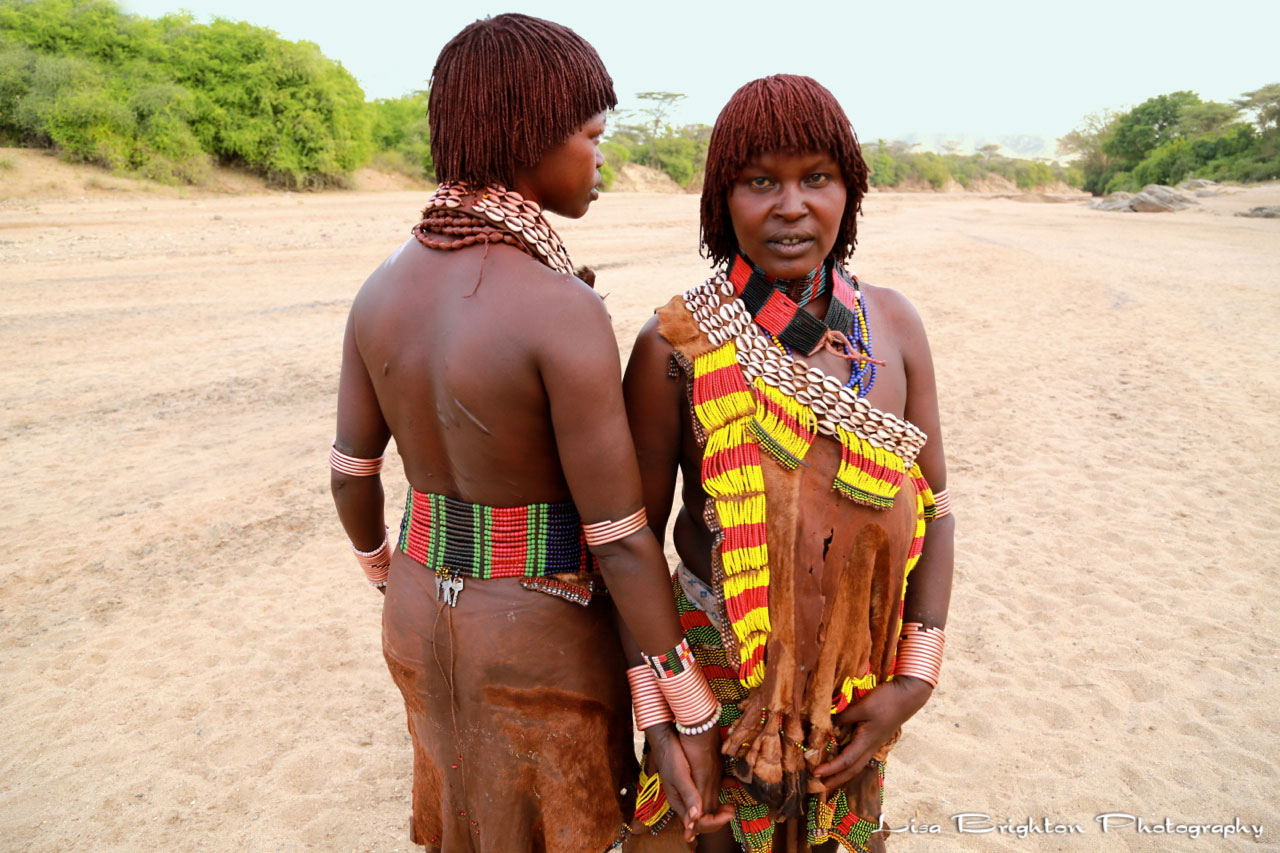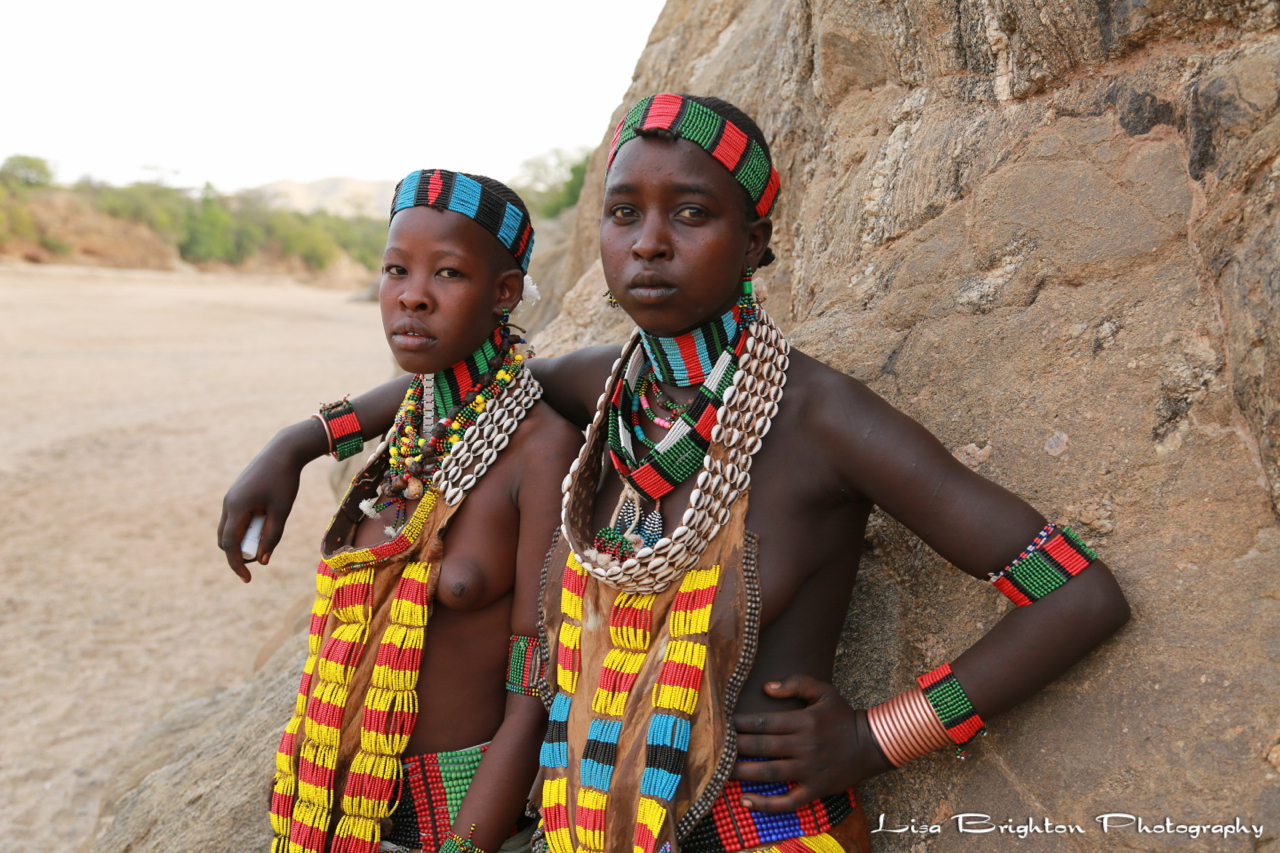4. Hamar
 I’m standing in the dry riverbed of the Keske River, which during rainy season, would be flowing freely. Today it is a beautiful landscape behind the Hamar tribal women I photograph. I visited the Mursi tribe yesterday and learned how they adorn themselves, so now I can make the distinction between the tribes — in terms of outward appearances anyway. The women of this tribe are recognizable by their ochre-colored hair that hangs down in a heavy fringe, and yellow and red bead layering. The women also wear “dik-dik” necklaces, which are neck rings indicating whether a woman is married, and if she is, they show that she is a first or second wife. I’ve learned that in this tribe, like some others, the men can have as many wives as they want as long as they can afford them. In a region where wealth is measured by cattle, a wife might cost
I’m standing in the dry riverbed of the Keske River, which during rainy season, would be flowing freely. Today it is a beautiful landscape behind the Hamar tribal women I photograph. I visited the Mursi tribe yesterday and learned how they adorn themselves, so now I can make the distinction between the tribes — in terms of outward appearances anyway. The women of this tribe are recognizable by their ochre-colored hair that hangs down in a heavy fringe, and yellow and red bead layering. The women also wear “dik-dik” necklaces, which are neck rings indicating whether a woman is married, and if she is, they show that she is a first or second wife. I’ve learned that in this tribe, like some others, the men can have as many wives as they want as long as they can afford them. In a region where wealth is measured by cattle, a wife might cost  a man a dowry of 30 to 40 cows or 120 goats, or a combination of both. And those cattle have a role beyond the dowry. Prior to marriage, the most important event in the Hamar community is a bull jumping ceremony, which is a rite of passage for young men. On the day of the event, the women stand together as they allow their backs to be beaten with sticks. It symbolizes their devotion to the man who leaps from cow to cow. Although many tribes here and around the world practice the ritual of scarification to create artistic patterns and symbols on their bodies, the scars these women have are difficult for me to look at, even though I know they were beaten by choice. But that is life here in the Omo Valley. Across the world, culture lends different definitions to the same practices. What I would consider abuse is an honorable ritual here. It’s different from anything I’ve seen or experienced, and this new knowledge offers me perspective. The people I’ve met so far are teaching me more about life than I am able to capture with my lens.
a man a dowry of 30 to 40 cows or 120 goats, or a combination of both. And those cattle have a role beyond the dowry. Prior to marriage, the most important event in the Hamar community is a bull jumping ceremony, which is a rite of passage for young men. On the day of the event, the women stand together as they allow their backs to be beaten with sticks. It symbolizes their devotion to the man who leaps from cow to cow. Although many tribes here and around the world practice the ritual of scarification to create artistic patterns and symbols on their bodies, the scars these women have are difficult for me to look at, even though I know they were beaten by choice. But that is life here in the Omo Valley. Across the world, culture lends different definitions to the same practices. What I would consider abuse is an honorable ritual here. It’s different from anything I’ve seen or experienced, and this new knowledge offers me perspective. The people I’ve met so far are teaching me more about life than I am able to capture with my lens.
